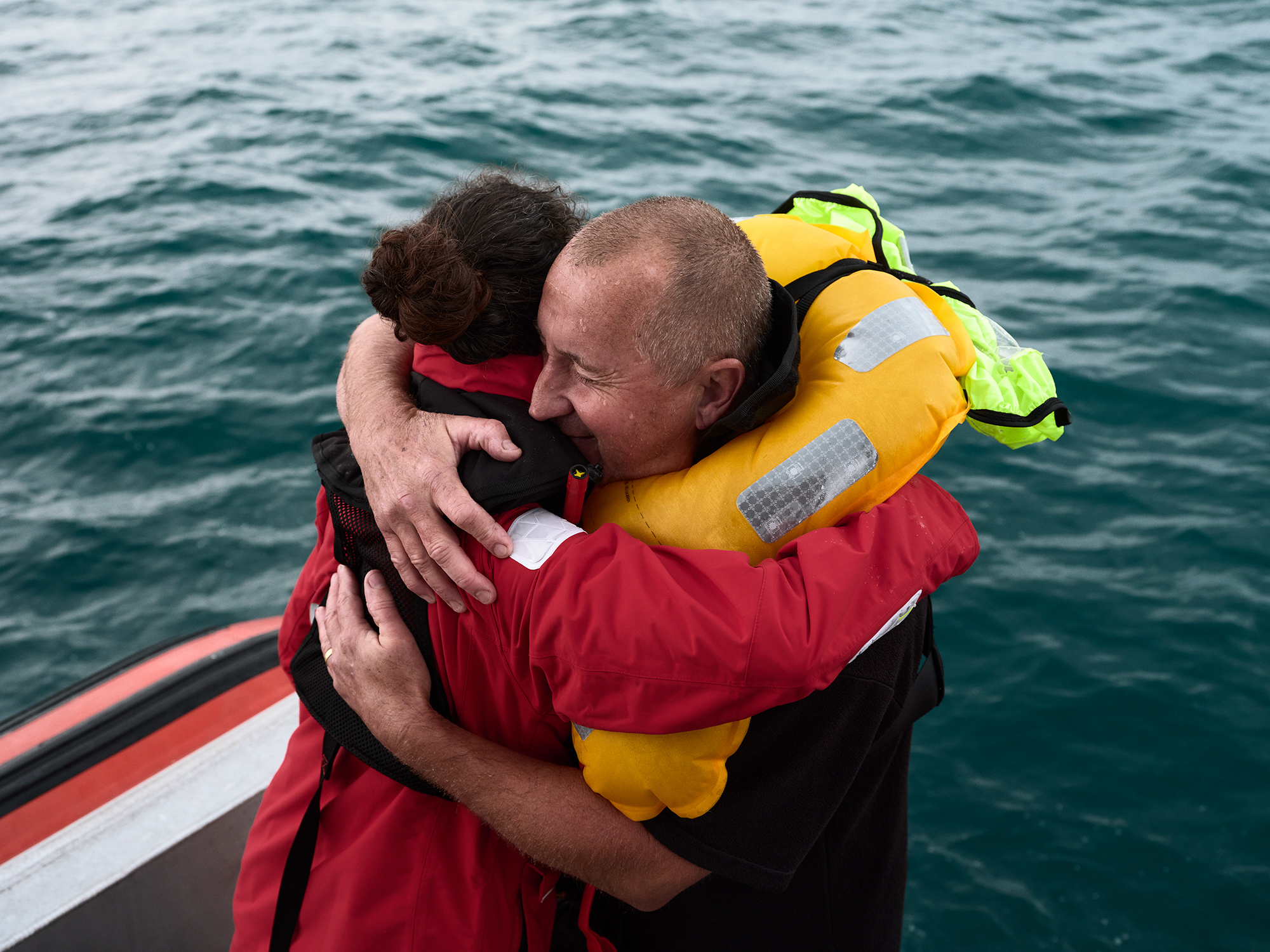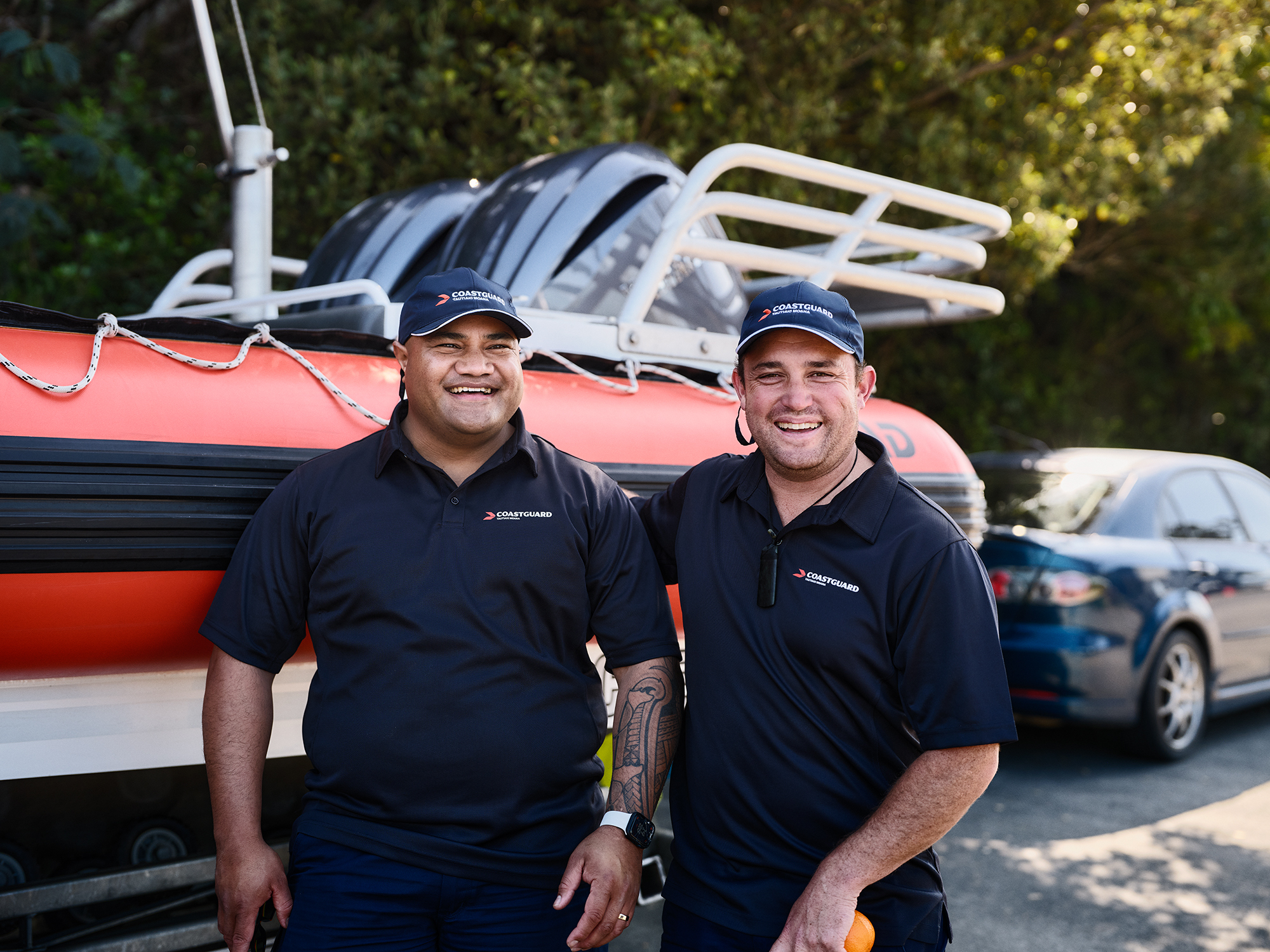Coastguard Mana’s brand-new 12.5m Protector rescue vessel Te Awarua might look the same as the other 21 which make up Coastguard’s new fleet of ex-America’s Cup vessels, but look a little closer and there’s two clear differences – the OXE300 3-litre, straight-six, twin-turbo diesel outboards powering it.
This is the first dual-diesel outboard commercial fitout in New Zealand and represents a new generation of vessels for Coastguard– taking advantage of new technology and enabling Coastguard units to be better kaitiaki of the environment.
“As one of the first Coastguard units to explore the diesel option, as well as their significant financial commitment to spearheading this project, Mana should be very proud to fly this flag for Coastguard. We’re delighted with the project’s progress and look forward to Coastguard Mana launching into operation,” says Coastguard Head of Operations Rob McCaw.
“We had outstanding support on this ground-breaking project from across the boating community, especially Rayglass, OXE Marine and Power Equipment utilising industry-leading experience, technology and skills.”
Why diesel for Coastguard Mana?
For a number of years, Coastguard Mana have required a new vessel, as the Unit’s current vessel, which originally came from Coastguard Howick, is showing signs of wear and tear. The vessel’s age means that it encounters frequent maintenance issues which impact the Unit’s operational readiness.
As such, Mana was a prime target to receive a new vessel, as part of the unique partnership between Coastguard, Lotto and ETNZ which saw the support boats from the America’s Cup, refitted and rebranded as Coastguard rescue vessels. However, environmental protection measures in place at Mana Marina don’t allow petrol refilling – meaning diesel outboards were the perfect, and only option, for Coastguard.
“The move to diesel outboards is something that Coastguard, which has the largest commercial fleet in New Zealand, has been considering for several years, with environmental protection and cost efficiencies just two of the key factors,” says Rob.
Coastguard Mana operates on an expansive stretch of coastline, with often rough sea conditions posing a number of challenges when responding to an incident. The move from their current 9.5m to the diesel-powered 12.5m vessel is a gamechanger for this hard-working group of volunteers who have embraced this important project for the entire organisation.
Coastguard Mana President Tara Doak says the whole unit is grateful to be receiving the new boat that will improve the safety of the unit while dealing with their call outs in what can be a very rough body of water.
“We service the northern entrance of the Cook Strait which provides constant challenges - not only dealing with the lee shore but once you’re out there, there are no harbours or places of refuge so if you get into trouble out there, you’re often in big trouble.”
“This new vessel we’re receiving is really going to be a gamechanger for us. The outboards have been set up to give pulling power and a useful cruising speed giving us that extra advantage in the water when it’s crucial, as well as all the technology that will help us in all other aspects like giving us stable communication to our people.”
OXE Diesel engines – more than just the environmental benefits
One of the biggest questions for Coastguard, and indeed the wider boating industry is the argument around whether diesel is better than petrol for the environment. The key factors being the reduced CO2 emissions and reduced fuel consumption.
The OXE Diesel engine emits significantly lower CO2 than a gasoline outboard engine. One litre of diesel produces approximately 2.69kg CO2 and one litre of gasoline produces 2.36kg CO2 when ignited. Since the OXE Diesel consumes up to 46% less fuel than comparable gasoline alternatives, the OXE Diesel reduces CO2 emissions by over 35.5%. During our sea trials, Te Awarua was consuming 33% less fuel compared to similar petrol outboards.
Due to a significantly lower fuel consumption than a petrol outboard, the OXE Diesel also provides Coastguard Mana unprecedented range. The fact that OXE Diesel runs on diesel gives volunteers the ability to refuel from larger diesel-powered vessels or marine-based platforms that further increase the versatility.
The powerhead of the OXE300 is a marinized bi-turbo automotive configuration from BMW that provides its full 680Nm (502ft-lb) of torque at the crankshaft at 1750rpm, at 1000rpm the engine provides over 500Nm (369ft-lb). At the propeller shaft, the torque numbers translate to 945Nm (696ft-lb). These are torque numbers that were previously unheard of in the outboard industry and provide Coastguard Mana with massive bollard pulling power, as well as fast hole shot acceleration.
“We are so proud to be powering vessels in the Coastguard New Zealand’s fleet with our reliable, powerful, and eco-friendly outboards,” says Douglas Natoce, President of OXE Marine.
“OXE Diesel, a product by OXE Marine, are developed for arduous situations, just like ones Coastguard need to be prepared for. Reliability is key when it comes to these often-critical situations, and minding the high torque of the OXE300, with safety functions like crash-stop capability and low-speed control (even under 4 knots) our demanding users can rely on their OXE to get you out there and back, safe and sound.”
“The incredible fuel efficiency of the OXE300 gives an increased range of up to 87% compared to gasoline outboards of equivalent horsepower, and is another important benefit of the OXE Diesel Outboard, increasing the operational runtimes vastly,” Natoce adds.
“This means more ocean covered and more time saving lives. And if run on biofuel, because of the highly refined automotive-based engine technology, total net CO2 emissions are reduced by up to 94.2%.”
Evolution, not revolution of the Coastguard fleet
In addition to the noteworthy environmental benefits, and the need for Coastguard Mana to shift away from petrol, Coastguard’s decision to opt for diesel outboards highlight the strength of the organisation and the opportunity to streamline core functions such as servicing.
While the price point of diesel engines is more than double their petrol alternatives, the service life of diesel engines are over five times the length of petrol engines. This means that over the course of a vessel’s life, it’s possible the same engines can be used, slashing Coastguard’s overall carbon footprint. In comparison, a petrol engine may have to be replaced up to four times during the lifetime of a Coastguard rescue vessel. Add in the fact that service intervals for diesel engines are four times longer than petrol engines, and the whole life cost soon adds up.
For regional or more isolated units, diesel engines also come with another servicing benefit – the local mechanic. As the OXE Diesel outboards are fundamentally the same as a BMW X5 (common rail diesel), a high percentage of issues will be able to be fixed by an automotive engineer. No need for vessels to be out of the water for a long period of time, units like Mana can engage with local engineers and diagnose problems quicker and get back out on the water.
“The new Coastguard Mana vessel will be at the cutting-edge of technology and test the viability of rolling diesel outboards out across the rest of the outboard fleet in the future,” Rob concludes.
ENDS


